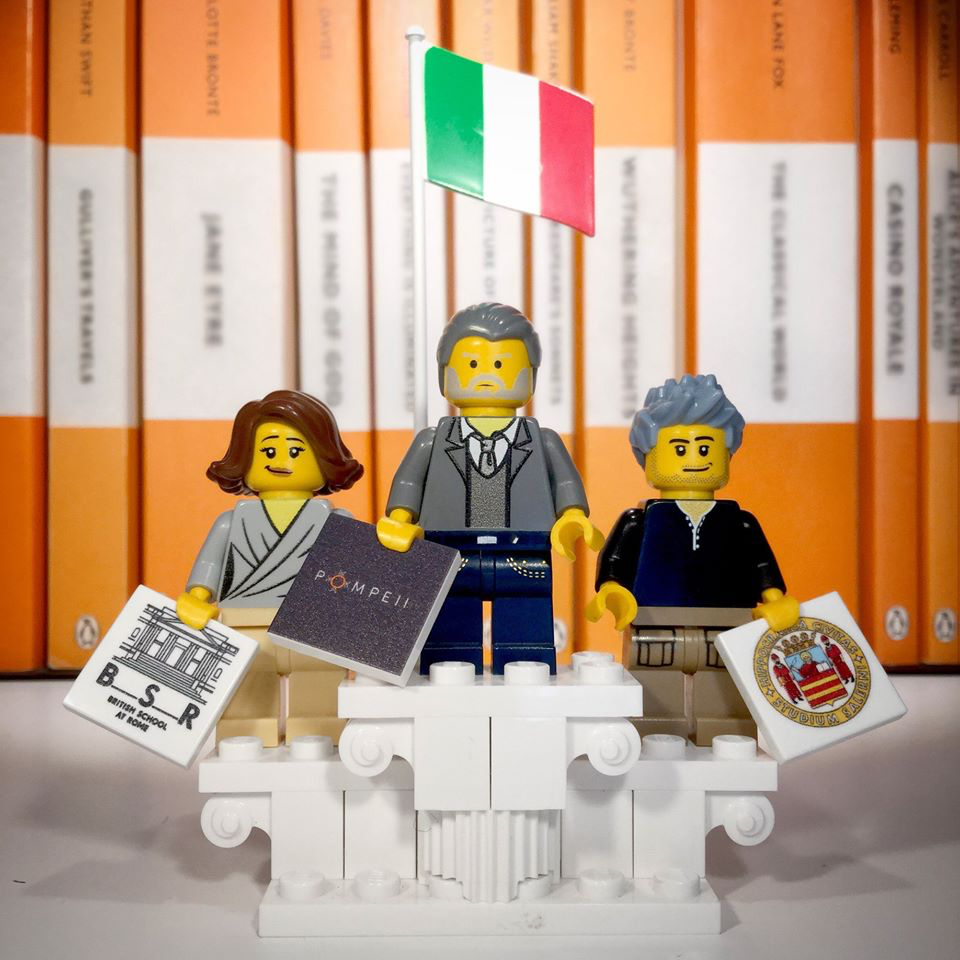Adults and children alike, they know LEGO; however, the enthusiasts of the classical world in particular should take advantage of social networks and not lose sight of the LEGO CLASSICIST project. The project was conceived from an idea of Liam D. Jensen, aka The Lego Classicist, an Australian archivist. An army of classicists is now conquering the web and the scholars of the ancient world as well, thanks to a perfect mix of pop art and ancient history.
As revealed by Liam himself, everything started by chance. The idea of recreating the Classics via the LEGO bricks surpassed all expectations. It has been a celebration of the ancient world and, above all, of the work of many scholars that love their job and allow us to know history and archaeology as much as possible, even if they have been working for different organisations and in different fields. Liam uses social networks in an innovative and inclusive way, and announces a new member of the LEGO Classicist family from time to time.

In a short time, and thanks to the crowd of people being intrigued by the initiative, the project has become an international one. The power of communication also goes through gaming and the capability of breaking down barriers, which is typical of the renowned LEGO figures: they have gained such a huge popularity worldwide because they are able to create scenarios and adventures that are always fresh and diverse. Many important public figures joined the LC family, among them there is Mary Beard, whose minifigure has become viral to the point that even the BBC talked about that, and she also appeared on the prestigious German archaeology journal Antike Welt, on SALON, the newsletter of the Society of Antiquaries of London, and at the University of Cambridge. Mary Beard herself then used her minifigure during her tv show, Front Row Late.
Presently, Italy may boast three LEGO minifigures, based on important scholars: Alessandra Giovenco, an archivist from the British School at Rome, professor Massimo Osanna, archaeologist and general director at the Archaeological Park of Pompeii, and professor Giacomo Pardini, an archaeologist and numismatist, professor at the University of Salerno. Therefore we asked Liam, so that he may tell us more about his project and on the subject of some of the most significant characters involved.

When and how was the Lego Classicists Project conceived?
The first Lego figure that went on social media was on the 20thFebruary 2016, but it was not until there were over 3 figures that I came up with the name Lego Classicists and made a Facebook page for them. That was really when it was born.
How many classicists does it include? Are there various or unique types or scholarly specialisations being included?
There are now over 90 in the LC family and I mostly choose scholars directly in the classical discipline but I also like to push outside of these to other ancient world disciplines (such as Egyptian) and I include anyone whom I feel brings support to the study of history, such as Conservators, Librarians and Archivists.
Who was your first character?
Technically the first figure who was made almost by chance is Dr. Tom Hillard, who is a Roman historian and an old friend of the family. But the one who – for the first time – made me start creating them on purpose was Michael Turner, who was the curator and master-mind of the three famous Lego ancient world models that include Lego Pompeii and Lego Colosseum, so I consider Michael to be the first official figure, as he is the real inspiration for the Lego Classicists family.
Starting from Australia, you conquered the world of classicists. Would you have expected such a great interest?
I had absolutely no idea that it would reach the world like this as it really started as just gifts to my friends, but I am so pleased to be inspiring the whole world of Classics in this fun new way.

Italy is being represented by three characters. Could you please tell us about them?

Prof. Massimo Osanna’s figure was a request by the Nicholson Museum, Sydney University, when they asked me to make a personal gift for Prof. Osanna and a second one to be placed into the Lego Pompeii model that is still in the Museum today. It was delivered to Prof. Osanna in person at Pompeii by two academics from the University of Sydney.
Alessandra Giovenco is the Archivist at the British School at Rome and I had the very great pleasure of meeting her in my role as an archivist when I delivered a collection to the BSR in 2016. Our daily conversations together inspired me to bring her into the LC family and I asked the Director of the British School at Rome to give it to her in person on my behalf.

Professor Giacomo Pardini had tagged me into a photo with a Lego figure of himself made by his nephew with the words “Almost a Lego Classicist”. Since then we have had an ongoing communication related to Lego and Classics so I felt it was very important to have him join the family properly (although I still think his nephew’s figure is better than mine). I sent his figure to him by mail at the University of Salerno and he received it a few days ago.
All three have responded in the same way that cannot be expressed in words but it is in the looks on their faces that you can see in the photos they send me with their figures. They have all been delighted. Of course, the Romans played a huge role in the development of much of modern culture, so it’s only fitting that there should be many Italian members of the Lego Classicists family in the future.
What is the message that you are trying to convey with your project?
I hope that Lego Classicists gives everyone an excuse to celebrate the ancient world and its study. It aims to help to join the community of international classicists together, to further highlight their work and to make classics and the ancient world more accessible to a wider audience. The real message – I hope – is the idea of serious play and bringing playful yet dignified new perspectives to the study of classical history.
The first Lego Classicist for 2020 is professor Giacomo Pardini from the University of Salerno. Could you please tell us if any other Italian classicist is going to join this great family?
I am in communication with one Italian classicist now whom I hope will join the Lego Classicists family soon and I have another one or two more in mind which will be revealed later.
What is the International Lego Classicism Day and how can we be involved?

International Lego Classicism Day is a social media event I have been running since 2017 on the 20th of February, which is the Anniversary of Lego Classicists, and I like to use this date as a way to encourage everyone to celebrate, engage, and play with ancient history through Lego bricks.



